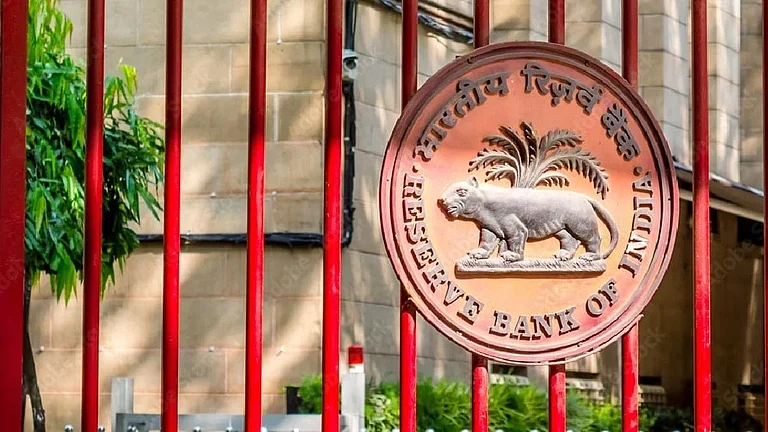The Insurance Regulatory Development Authority of India (Irdai), the regulatory body for insurance, has suggested mandating insurance coverage—such as life, health, and motor insurance—for insurance companies operating in gram panchayats nationwide. This initiative aims to realize the goal of ensuring "insurance for all." Irdai has proposed that all life insurers should cover a minimum of 30 per cent of lives in each gram panchayat across the country, with a minimum of 25,000 gram panchayats as the initial target in the first year. This percentage increases to 40 per cent of lives in a minimum of 50,000 gram panchayats in the second year and to 50 per cent of lives in a minimum of 75,000 gram panchayats in the third year, as outlined in the draft Rural, Social Sector, and Motor Third Party Obligations Regulations, 2024.
For general insurers, the minimum requirement is that 30 per cent of dwellings under fire insurance and vehicles under motor insurance (comprehensive and third party) must be covered in each gram panchayat across the country, with a minimum of 25,000 gram panchayats targeted in the first year, as dictated by the lead insurer.
In the subsequent years, this requirement rises to cover 40 per cent of dwellings under fire insurance and vehicles under motor insurance (comprehensive and third party), with a minimum of 50,000 gram panchayats targeted in the second year, and 50 per cent of lives covered, with a minimum of 75,000 gram panchayats targeted in the third year.
For both general and standalone health insurance companies (SAHI) insurers, the minimum requirement is to cover 30 per cent of lives under health and personal accident insurance in each gram panchayat across the country, with a minimum of 25,000 gram panchayats targeted in the first year, as directed by the lead insurer.
In the subsequent years, this requirement rises to cover 40 per cent of lives under health and personal accident insurance, with a minimum of 50,000 gram panchayats targeted in the second year, and 50 per cent of lives covered, with a minimum of 75,000 gram panchayats targeted in the third year.
After notification, the number of lives to be covered under the social sector has been raised to 20 per cent in the first year, as all insurers have successfully met their social sector obligations.
Insurance activities related to government social security schemes like Pradhan Mantri Awas Yojana, Pradhan Mantri Suraksha Bima Yojana (PMSBY), Pradhan Mantri Jeevan Jyoti Bima Yojana (PMJJY), etc., in which the total or partial premium is covered by the government, with or without any contribution from the members/beneficiaries, will be regarded as fulfilling rural and social sector obligations.
Insurance policies providing coverage to individuals holding BPL cards, MNREGA cards, eShram cards, DBT beneficiaries, Ayushman Bharat cards, Pradhan Mantri Mudra Yojana beneficiaries, Jan Dhan account holders, beneficiaries of PM Kisan Samman Nidhi Yojana, PM Viswakarma Yojana, Pradhan Mantri Jan Arogya Yojana, etc., would meet the requirements for social sector obligations.
Micro-insurance policies issued are considered eligible for fulfilling social sector obligations, and insurance policies distributed through Bima Vahaks will be included in meeting rural and social sector requirements.
The insurance regulatory authority stated that each general insurance company must ensure a minimum of a 20 per cent increase in coverage compared to the total number of goods and passenger-carrying vehicles insured in the previous financial year. Alternatively, they should cover a minimum of 20,000 vehicles collectively under these categories or 10,000 vehicles in each category, whichever figure is higher, considering nearly 50 per cent of vehicles in these categories remain uninsured.
These are vital sectors within the motor insurance industry and are susceptible to third-party claims. The inclusion of newly acquired goods-carrying and passenger-carrying vehicles will not be considered in meeting motor third-party obligations.
The fulfilment of motor third-party obligations will rely on renewals of existing vehicles and insuring uninsured vehicles, provided there is a gap in insurance coverage of at least 30 days.
These vehicles constitute crucial aspects of the motor insurance industry and are significantly susceptible to third-party claims. “Every general insurer is therefore required to underwrite at least a 20 per cent increase over the total number of goods carrying and passenger carrying vehicles as compared to what was covered in the last financial year or 20,000 vehicles under these categories or 10,000 vehicles in each category, whichever is higher,” according to the draft norms.
Each new insurer is required to insure a minimum of 10,000 goods-carrying and 10,000 passenger-carrying vehicles in their first operational financial year.
As a means of meeting their obligations, insurers have the opportunity to purchase and sell obligations using up to 20 per cent of their surplus. The insurer who sells the obligations will retain their role as the insurer and will be accountable for managing the insurance policy and processing claims associated with it.
The stakeholders and general public are expected to provide comments on the exposure draft by February 27, 2024.
According to the Irdai, insurance penetration rose from 2.71 per cent in 2001-02 to 4.2 per cent in 2021-22. Similarly, insurance density climbed from $11.5 in 2001-02 to $91 in 2021-22. Total insurance premiums surged from Rs 62,818 crore in 2001-02 to Rs 9.17 lakh crore in 2021-22, marking a growth of 14.34 per cent.
Claims escalated from Rs 25,425 crore in 2001-02 to Rs 6.42 lakh crore in 2021-22. Assets under management surged from Rs 2.18 lakh crore in 2001-02 to Rs 54.37 lakh crore in 2021-22, while the insurance distribution network/points expanded from 8.26 lakh in 2001-02 to approximately 52.65 lakh in 2021-22.













